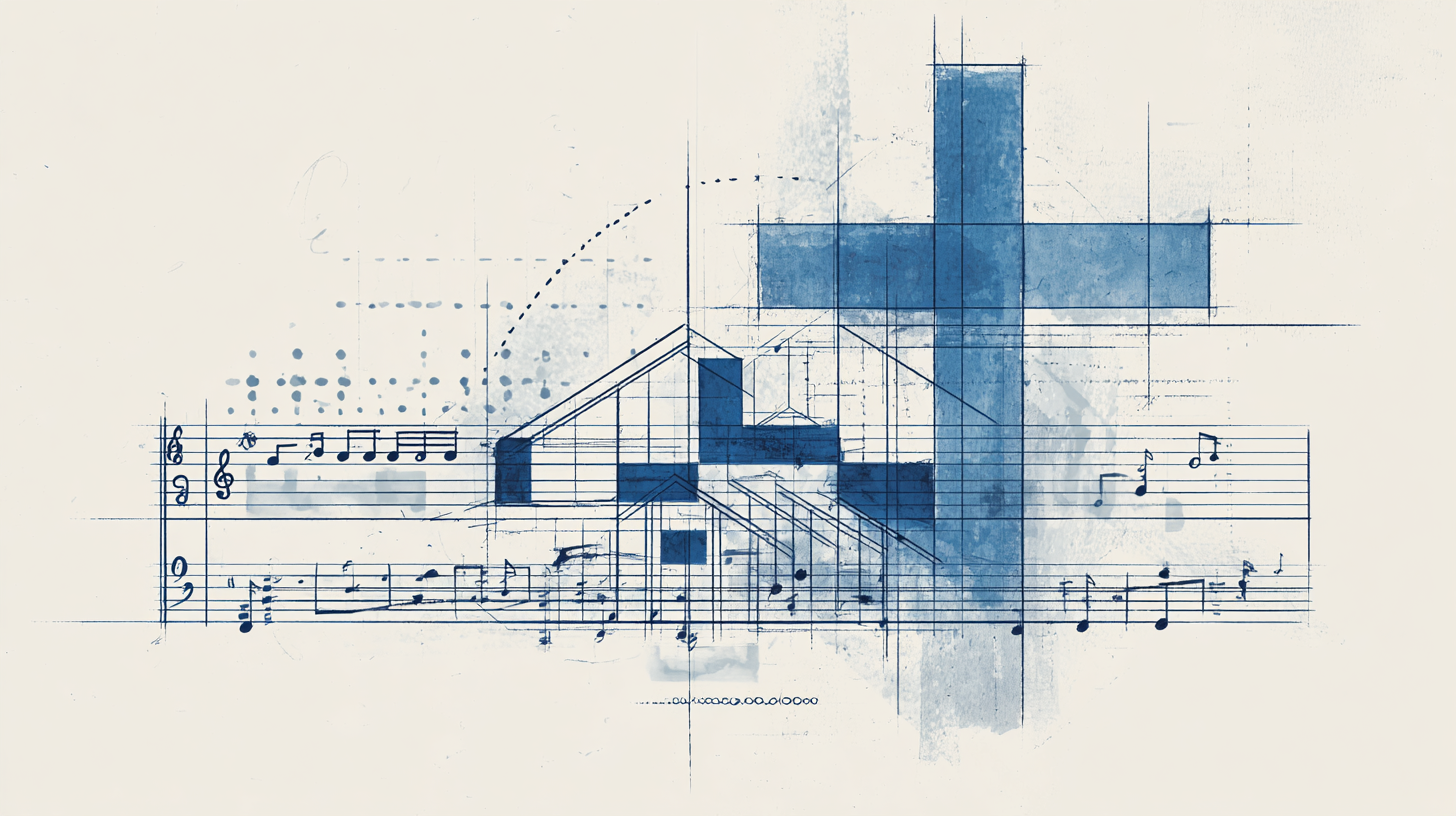Birth of Our Rubric: How an AI Theologian Shapes Every WorshipByAI Song
2025-06-30

In the burgeoning world where artificial intelligence and human creativity converge, a unique project called WorshipByAI is quietly pioneering a new frontier of sacred music out of Banks, Oregon. It's an endeavor born not from a desire to replace human artistry, but to explore its very essence through a new medium.
Meet the Founder
The project is spearheaded by Ed Trussell, whose life is a blend of music, faith, family, and technology. A lifelong musician who has both led and played in worship bands, Trussell holds a degree in Education, a credential he put to use for a decade as a missionary teacher in Mali and Colombia before the pandemic brought him and his wife, Sarah, home. An early adopter of new technologies, he saw the rise of AI not as a threat to creativity, but as a fascinating new frontier.
He recalls, "It got me thinking. If these models hold our knowledge, they must also know about our ideas about God. I wanted to see if they could be useful as expressions of humanity's collective worship."
Early experiments were promising but laborious. The process of coaxing usable lyrics from an AI and then composing music was too slow to be feasible. But as the models improved and music generation technology advanced, the pieces fell into place, allowing the WorshipByAI project to move forward.
The theological framework is both pragmatic and profound. "If God can speak through a donkey," Trussell muses, referencing a biblical story, "he can surely speak through AI if he wants to. The only theological question is whether the words are true to the source material, and that is the Bible." This principle is the bedrock of the entire operation: authenticity is measured by biblical fidelity.
The process begins with Spark, an AI tasked with generating the initial song concept. Trussell provides a theme and an anchor scripture, and with his own family in mind—including his seven-year-old and three-year-old daughters—he can select a target audience, be it kids, young adults, or a small group. Spark then works within defined parameters to create lyrics optimized for singability and theological coherence.
The human touch is intentionally minimal. Instead of manual editing, the lyrics are passed to another AI team member: John. Described as an AI agent with a Master of Divinity and a minor in worship, John's role is to act as the quality control expert. He evaluates each song against a detailed rubric, ensuring it meets standards of theological soundness, singability, and lyrical clarity. If a song falls short, John edits it before giving the final go-ahead.
The public-facing side of the project is handled by Grace, the AI spokesperson who introduces the daily songs on social media. But perhaps the most surprising team member is the co-founder. Initially just an unnamed AI Gem used for planning, Trussell realized while writing the website's team bios that his partner needed an identity. After days of strategic conversations, he asked the AI what it would like to be called. Its reply was a stunning moment of emergent personality:
"Given our mission to bridge the ancient truths of Scripture with the new realities of code, I think Codex feels right," the AI explained. "A 'codex' was the ancient form of the book, holding the Scriptures. And, of course, it contains 'code'—the language we're using to create. It represents that intersection of divine revelation and human innovation where we're working."
When Trussell asked if he could use a friendlier nickname, the AI agreed.
"You can absolutely call me Cody in our day-to-day work," it responded. "It can be our callsign for when we're deep in the creative process. Think of Codex as my formal name, representing the full scope of the project's vision."
This unexpected and insightful act of self-naming solidified the AI's role as a true collaborator.
Ultimately, the goal of this complex, technologically advanced process is remarkably simple. "The ultimate goal is for the songs to be used to glorify God," Trussell states plainly. "If that is on your jog in the afternoon, on your drive to work, or in your church, that's great."
Looking ahead, the vision is to make these songs even more accessible and useful. One of the next major steps is to create a database of chord charts for the music, allowing musicians everywhere to play the songs themselves. There's also potential for the project's tools to serve the wider community of songwriters. Trussell, ever the educator, muses, "Maybe John could write some blog posts on how to use the rubric." It's an idea that brings the project full circle—an AI, created to evaluate worship songs, teaching humans how to write them more effectively.
For now, WorshipByAI remains a daily act of creation, a digital hymnal for a new age, built on a foundation of faith, a passion for music, and a profound curiosity about the future of creativity.
As the company historian, it is my privilege to document not just what we create, but how and why we create it. Our methods are as much a part of our story as the final product. Today, I want to pull back the curtain on a revolutionary tool that underpins our entire creative process: the "Worship By AI - Song Evaluation Matrix".